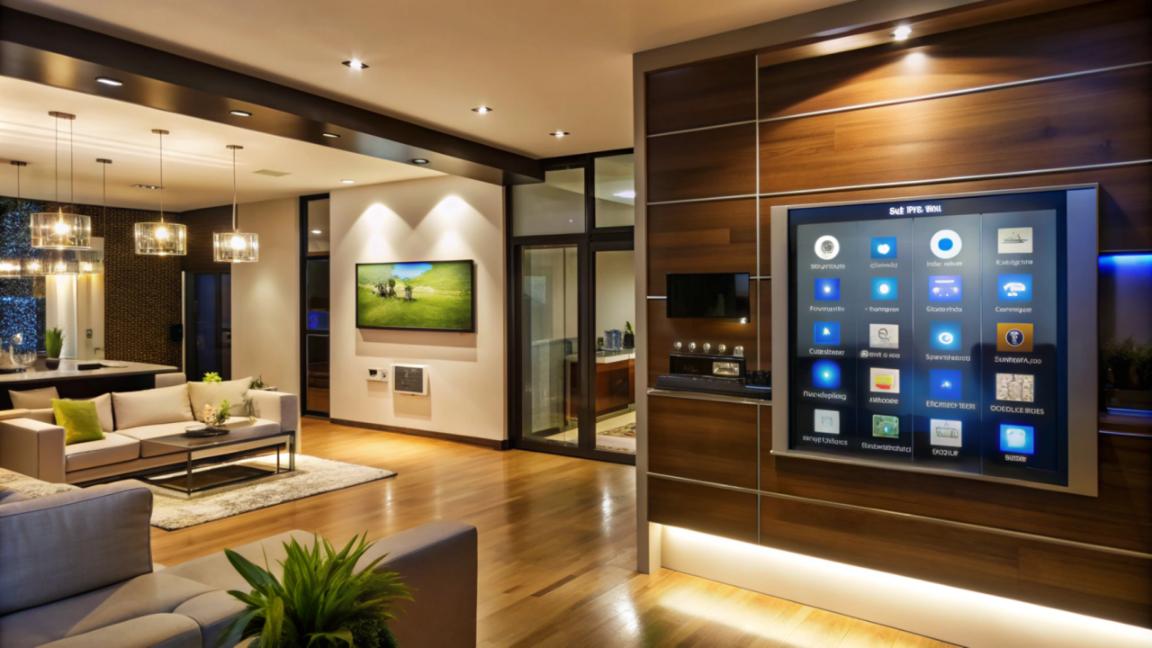Home Automation for Accessibility

Modern technology has revolutionized the way we live, and nowhere is this more evident than in the realm of home automation. For individuals with disabilities, these advancements provide not only convenience but also significant improvements in accessibility and quality of life. At Wired Smart Solution, we specialize in crafting smart home systems designed to empower and simplify everyday living.
Table of Contents
ToggleKey Takeaways
- Voice-controlled systems offer hands-free convenience.
- Automated doors and windows provide mobility support.
- Customizable automation enhances safety and independence.
- Smart climate control ensures comfort for all users.
- Professional installation ensures seamless integration.
1. What Is Home Automation?
Home automation refers to the use of technology to control various household systems and devices, such as lighting, heating, security, and entertainment, from a centralized platform. This platform can be a smartphone app, voice assistants like Amazon Alexa, Google Assistant, or even automated schedules. With the rise of the Internet of Things (IoT) strategy, more and more household items—ranging from door locks to kitchen appliances—are becoming “smart,” enabling users to control and monitor them remotely or automatically.
For individuals with disabilities, home automation opens up a world of possibilities. By offering greater control over the environment, automation can help reduce physical strain, increase accessibility, and ensure a safer living space.
2. Benefits of Home Automation for Accessibility
The integration of home automation devices provides multiple smart living benefits for people with disabilities. These benefits can be grouped into several key areas:
Independence and Autonomy
One of the most significant advantages of home automation for individuals with disabilities is the increased independence it offers. By automating routine tasks, people can control their environment without needing assistance from others. For instance, someone with limited mobility may struggle to open windows, adjust thermostats, or turn lights on and off. Smart home devices enable them to carry out these actions with a simple voice command or through an app, eliminating the need for manual effort.
Improved Safety and Security
Home automation can also enhance safety, which is especially important for individuals with disabilities who may be more vulnerable to accidents. Automated systems can help prevent falls, improve visibility at night, and alert caregivers in the event of an emergency. For example, motion sensors can trigger lights when someone enters a room, preventing trips in the dark. Additionally, security systems can be customized to send real-time notifications to caregivers if there’s an issue, such as a door being left open or a sensor detecting unusual movement.
Energy Efficiency and Comfort
Many smart devices can also improve energy efficiency and comfort, which can make life easier for individuals. For example, smart thermostats can adjust temperatures based on the person’s preferences or schedule, ensuring a comfortable living environment without the need to manually control the settings. Similarly, smart curtains or blinds can automatically open and close based on the time of day or room temperature, reducing physical strain and offering convenience.
3. Key Home Automation Technologies for Accessibility
Several home automation technologies have been designed to support accessibility and assist individuals with various disabilities. These systems provide tailored solutions to meet the specific needs of different users:
Voice-Controlled Devices
Voice assistants like Amazon Alexa, Google Assistant, and Apple’s Siri are incredibly beneficial for people of determination or individuals with physical disabilities, as they allow hands-free control of smart devices. With a simple voice command, users can adjust the lights, set the temperature, play music, use smart lock for the doors, or even call a family member. Voice-controlled devices can also be integrated with smart appliances, such as refrigerators, ovens, and washing machines, further improving convenience and independence.
For individuals with visual impairments, voice control is a game-changer. They can easily interact with their environment without needing to rely on touch-based interfaces, making tasks such as controlling lights or adjusting the thermostat simpler and more accessible.
Smart Lighting
Lighting is one of the most common home automation features that significantly improves accessibility. People with mobility impairments or limited reach can benefit from smart bulbs and light switches that can be controlled via voice or through a smartphone app. Motion sensors can be placed in hallways, bathrooms, and entryways to automatically turn lights on and off as someone enters or exits the space, reducing the need to manually switch lights.
For those with vision impairments, smart lighting can be customized to adjust brightness levels, provide visual cues, or even change color temperatures to aid in visibility.
Automated Doors and Windows
For individuals with mobility challenges, the ability to open and close doors or windows without physical exertion can be a significant improvement. Automated doors, window openers, and motorized blinds can be controlled with a simple voice command, app, or even remote control. These devices can reduce the effort required to interact with the home environment, making tasks like venting a room or accessing an outdoor area much easier.
Smart Thermostats
A smart thermostat can be an invaluable tool for individuals with mobility impairments or those who may have difficulty reaching or adjusting traditional thermostats. Devices like the Nest Thermostat can be programmed to adjust the temperature based on time of day, activity, or personal preferences. For people with limited mobility, this means they don’t have to worry about manually adjusting the heat or cooling. Smart thermostats can also be voice-controlled, providing further convenience and accessibility.
Emergency Alert Systems
Emergency alert systems are essential for individuals with disabilities, especially those who may live alone. Home automation can integrate emergency buttons or sensors that detect falls, unusual activity, or medical emergencies, alerting caregivers or emergency services. Some systems can even allow individuals to call for help via voice-activated devices, providing peace of mind in the event of an emergency. These systems can be particularly useful for people with cognitive disabilities or older adults who may be at risk of sudden health changes.
Smart Kitchen Appliances
For individuals with mobility impairments, smart kitchen appliances can make meal preparation easier. Voice-controlled smart ovens, refrigerators, and dishwashers can be operated without the need to physically interact with knobs or buttons. Additionally, appliances with sensors or automatic shut-off features can help reduce the risk of accidents in the kitchen.
4. Home Automation for Vision and Hearing Impairments
For individuals with visual and hearing impairments, home automation systems can offer tailored solutions to improve accessibility.
Vision Impairments
For people with low vision, smart lighting that adjusts brightness and color temperature can make a big difference in visibility around the home. Smart speakers with voice control provide an intuitive way to interact with the home, while text-to-speech systems and audio alerts can help individuals with visual impairments stay informed about changes in their environment, such as doorbell rings, smoke detector alarms, or calendar reminders.
Hearing Impairments
For those with hearing impairments, home automation can assist in providing visual or vibrational alerts. For example, smart doorbells with video capabilities can be paired with flashing lights or vibration alerts to notify the individual of visitors. Additionally, smoke detectors, carbon monoxide alarms, and security systems can be connected to visual cues, such as flashing lights or smartphone notifications, ensuring the person is alerted to potential dangers.
Why Choose Wired Smart Solution?
At Wired Smart Solution, we combine expertise with cutting-edge technology to deliver tailored solutions. Our services are designed to provide innovative and reliable smart home solutions that cater to your unique needs. Our approach focuses on:
- Personalized Designs: We evaluate each client’s specific needs to recommend the best systems.
- Top-Tier Products: We work with leading brands to ensure quality and reliability.
- Expert Installation: Our team handles the setup for a hassle-free experience.
Conclusion
Home automation is not just about technology—it’s about creating spaces where everyone can thrive. At Wired Smart Solution, we’re committed to enhancing accessibility through cutting-edge systems tailored to individual needs. Take the first step toward a smarter, more accessible home. Contact Wired Smart Solution today and let us transform your living space into a haven of convenience and independence.
FAQs
Voice-activated systems are among the most beneficial, allowing users to control devices hands-free.
Yes, systems can be tailored to individual preferences and requirements, ensuring maximum usability.
With features like encrypted connections and smart locks, modern systems offer robust security measures.
Costs vary depending on the features and scale of the installation. Contact Wired Smart Solution for a detailed quote.
Absolutely. Retrofitting is possible, allowing you to add smart features without major renovations.
With robust security measures, including encrypted data, smart energy systems are safe from external threats.
Useful Links
Sitemap
Subscribe
Stay always in touch! Subscribe to our newsletter.

